The Art of Container Gardening: How to Plant Flowers in a Pot Like a Pro
Unleash your inner gardener and create a living masterpiece with container gardening! Learn the simple steps to planting flowers in a pot, adding a splash of color to any space—from a sprawling backyard to a tiny patio or sunny windowsill. Discover how to create your own showstopper and the secrets to making your flowers thrive. It's all about being a detective first: finding the right plant for the right place. Get your hands dirty and watch your masterpiece grow!
8/24/20255 min read
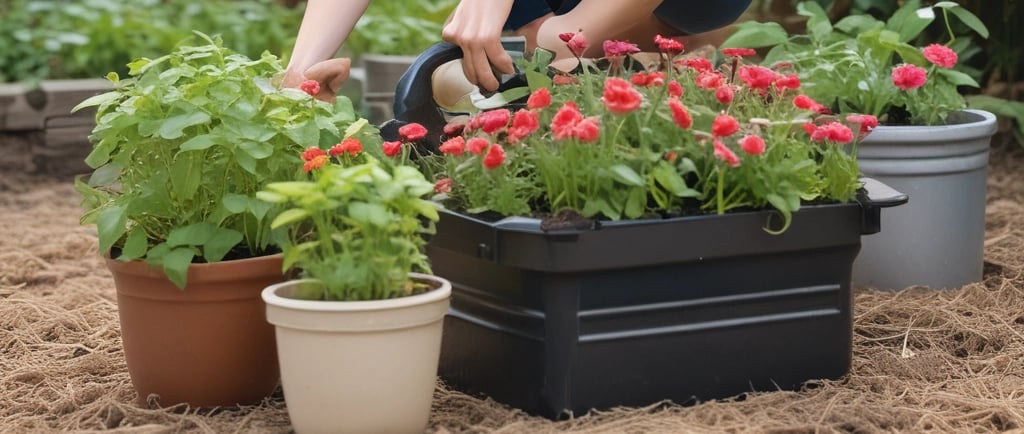

Have you ever looked at a beautiful, overflowing flower pot and wondered, "How do they do that?" Honestly, it’s not as complicated as you might think. Planting flowers in a pot is one of the most rewarding ways to add a splash of color and life to any space, whether you've got a sprawling backyard, a tiny patio, or just a sunny windowsill. It’s a bit like painting a living masterpiece, and the best part is, you get to see it grow and evolve all season long. Let's get our hands a little dirty and walk through the simple steps to create a showstopper of your own.
First, let's talk about the big-picture stuff. Before you buy a single plant, you need to be a bit of a detective. Where is your pot going to live? Is it a shady spot on the front porch or a sun-drenched deck that bakes all afternoon? Knowing your location is key, because it'll dictate what kind of flowers will thrive there. You know what they say: right plant, right place.
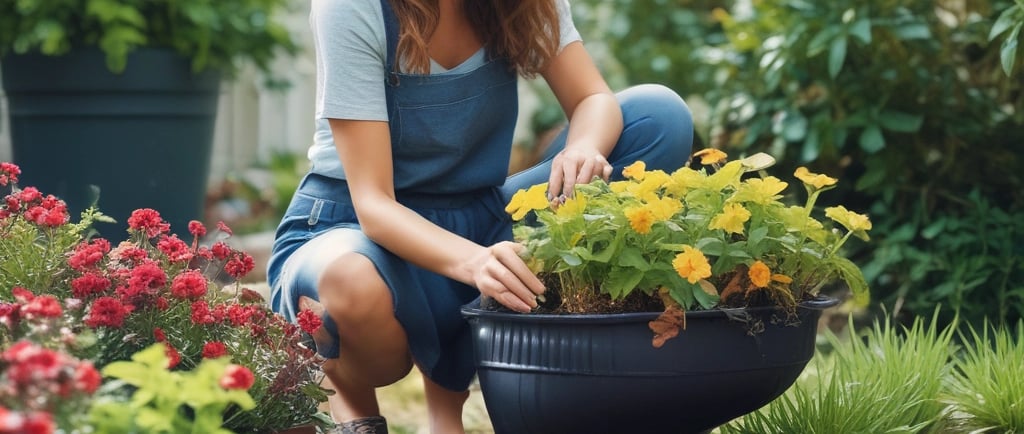

Key Ingredients for a Thriving Container Garden
You don't need a massive collection of tools to get started. Think of it more like a recipe with a few crucial ingredients. Here's the rundown:
A fabulous pot (or planter): While any pot with a drainage hole will do, consider the material. Resin planters are great for windy areas and can be lighter to move around. If your pot is super large, here’s a pro tip: put an upside-down bucket or even some empty plastic bottles in the bottom. It saves a ton on potting soil and makes the pot much easier to move around later.
The perfect potting mix: This is probably the most important ingredient. Don't use garden soil from your yard! It's too dense for pots and can lead to waterlogged roots. A good quality potting mix, sometimes called potting soil, is specially formulated to be light and fluffy, giving roots the air they need. Brands like Miracle-Gro or Espoma are solid choices.
Gardening gloves and a small shovel: Totally optional, but they keep your hands clean and save your fingernails. I’ve been known to just use my hands, but that’s a personal choice!
Fertilizer: Think of fertilizer as your flowers' favorite snack. A slow-release granular fertilizer or a water-soluble option will give your plants the nutrients they need to keep blooming all season long.
A water source: A watering can, a hose, or a good old-fashioned pitcher will do the trick.
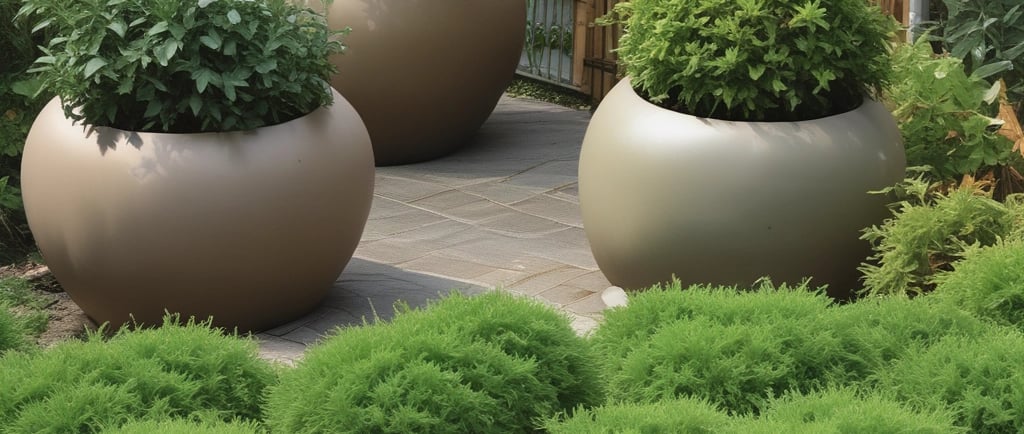

The "Thriller, Filler, Spiller" Method: A Simple Design Trick
For a pot that looks full and professionally designed, gardeners love to use the "Thriller, Filler, Spiller" method. It's a simple, foolproof framework that ensures a balanced and beautiful arrangement every time.
Thriller: This is the star of the show, a tall, upright plant that adds drama and height to the center or back of the pot. Think about a tropical dracaena spike, a tall ornamental grass, or even a yucca plant.
Filler: These are the mid-sized, rounded plants that surround the thriller. They "fill" the space and add body to your arrangement. Petunias, calibrachoa, and various foliage plants work perfectly here.
Spiller: These are the plants that trail and cascade over the edges of the pot. They provide a soft, flowing look that pulls the entire arrangement together. Sweet potato vines, ivy, and creeping Jenny are classic spillers.
Arranging your plants this way is a game-changer. It gives your pot a dynamic, three-dimensional look that's just so pleasing to the eye.
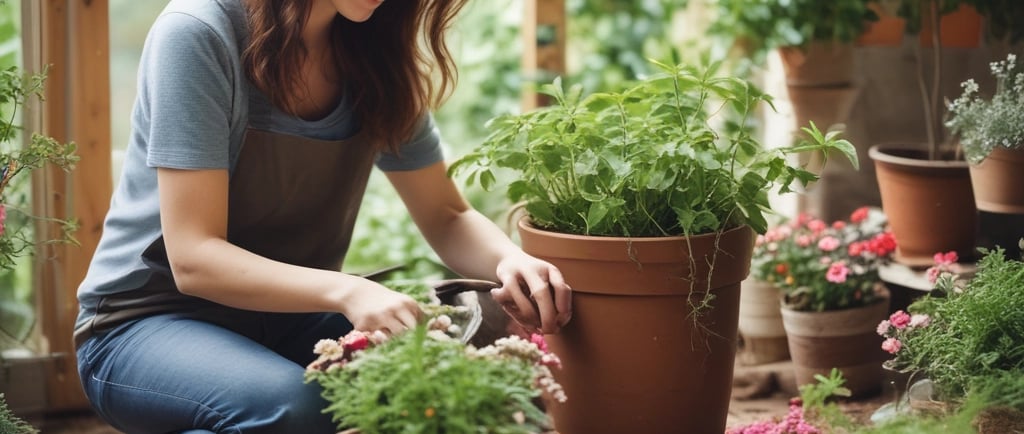

Step-by-Step Planting Guide (Let’s Get Our Hands Dirty)
Okay, now that we have our materials and a plan, let’s get to the fun part.
Prepare your pot. Make sure it has drainage holes—seriously, this is non-negotiable. If you have a super large pot, you can place that upside-down bucket inside now.
Add potting mix. Fill the pot with your potting mix, leaving a few inches of space at the top. You'll need this room to add the plants and for watering later.
Dry-fit your arrangement. Before you remove any plants from their containers, place them inside your pot to see how they look. This is where you can play with the "Thriller, Filler, Spiller" method, moving things around until you're happy with the design. It's a bit like a dress rehearsal, and it saves you from making mistakes.
Prep your plants. Gently take each plant out of its nursery container. You’ll notice the roots are probably tightly packed. Gently use your fingers to loosen or "tickle" the root ball. This encourages the roots to grow outward into the new soil.
Start planting. Dig a hole for your thriller, making sure the top of its soil is slightly below the rim of the pot. Place it in the hole, fill in the space around it with more potting mix, and lightly press down to secure it. Then, do the same for your fillers and spillers, working your way around the pot.
Add fertilizer. This is a great time to mix in a granular, slow-release fertilizer according to the package directions. It will feed your plants over time and keep them healthy.
Water, water, water! Give your new pot a really good, deep drink. Water until you see it coming out of the drainage holes at the bottom. This helps settle the soil and gets the roots off to a good start.
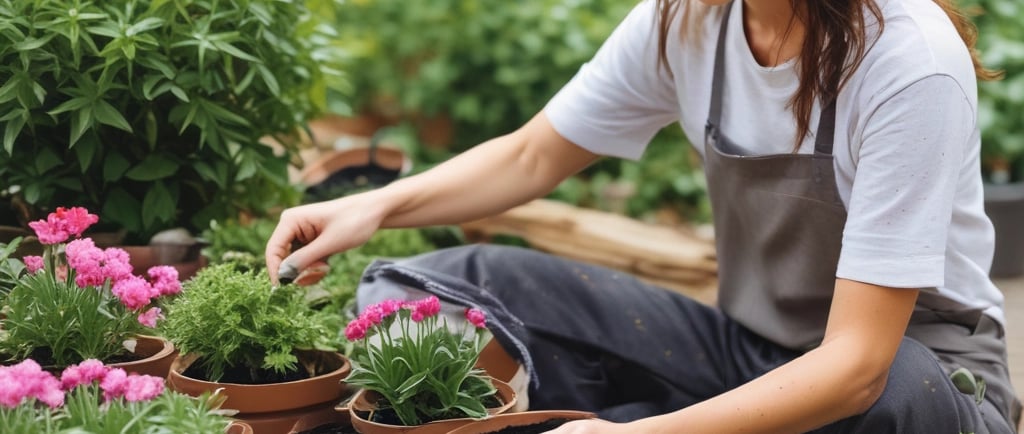

Container Gardening FAQs
Q: How often should I water my potted flowers?
Honestly, this is the number one question people ask. The answer is, it depends! There's no set schedule. The best way to tell is to stick your finger about an inch or two into the soil. If it feels dry, it’s time to water. In the heat of July and August, this could mean daily, especially for smaller pots.
Q: Can I reuse potting soil from last year?
You can, but it’s not ideal. Over time, potting soil gets compacted and loses its nutrients. You can mix old soil with new to save some money and reduce waste, but it's best to refresh your pots with at least some new, high-quality potting mix each season.
Q: Is there a special kind of fertilizer I should use?
Most all-purpose fertilizers for flowers or container plants will work great. Look for a slow-release granular fertilizer or a water-soluble kind. Follow the directions on the package, and don't overdo it—too much fertilizer can burn your plants.